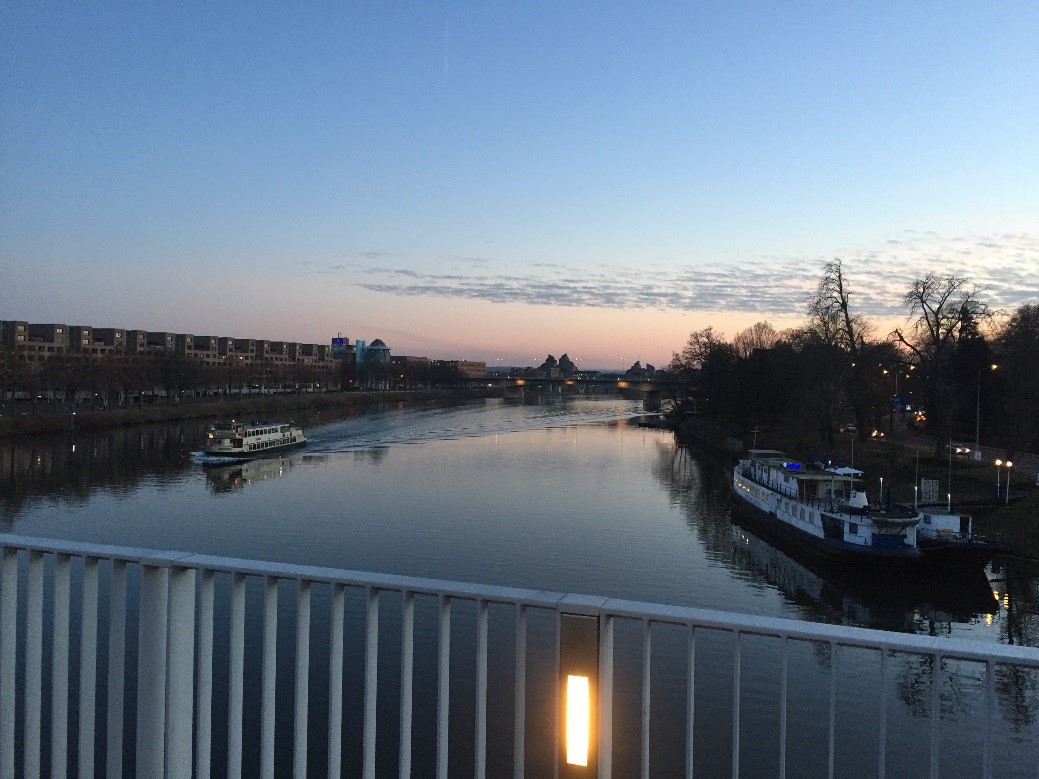
Adelyn Foo Xin Yi
BSocSc Class of 2017
Arriving at Maastricht
For the first semester of my final academic year, I was offered an exchange placement to Maastricht University School of Business and Economics (SBE) in Maastricht, Netherlands. I arrived one hot afternoon in the late August summer at the Schiphol Airport in Amsterdam. The university’s International Student Network (ISN) initially arranged a few student volunteers to meet the exchange students landing on the same day at the airport. They were to show us the way and accompany us on the journey to Maastricht together. Unfortunately, it did not work out at the last minute. Instead, they gave us the mobile numbers of the other students and told us to contact each other on WhatsApp should we wish to make our way to Maastricht together. It was through this spontaneous arrangement that I met my first friends in the Netherlands.
Our group was an interesting mix: two Masters exchange students from Taiwan and Istanbul, and a fellow SMU mate from the Law faculty. We quickly got acquainted with one another and figured out how to travel to Maastricht on the Dutch international rail system (NS). We bought one-way tickets to Maastricht and located the platform to board the train. From there, it was a start of a three-hour train journey, with multiple transfers in various stopover cities. We had to disembark the train and board a separate train at another platform. The transfers were like mini-adventures. Some train transfers had barely only minutes to spare, and we had to make our way to the correct platform with our giant luggage in tow! Later on, I realised that the trains ran at minimally half-hour intervals, which meant that if we missed the train, we would be stranded in an unfamiliar Dutch city, with at least a half-hour wait till the next Maastricht-bound train comes along.
Eventually, we arrived in Maastricht. Hungry from the long train journey and without having had anything to eat since a quick bite earlier in the Schiphol Airport, we found an Asian restaurant next to the train station. It was more of an Asian-fusion restaurant, yet credit had to be given for the food was authentic in its own right, with the exception of fried noodles instead of proper Chinese rice noodles in our hor fun dish.
Prior to the start of my exchange semester, I began sourcing for my accommodations four months in advance, as I would be doing a summer internship abroad in the U.S. and wanted the reassurance of securing housing early. My room belonged to a regular student at SBE. She was willing to sublet her room to me while she did her exchange semester concurrently in Sweden.
With the aid of Google Maps, I found out that I could board a bus to my house. I had to purchase an OV-chipkaart, which was the equivalent of an EZ-link card in Singapore, and load it with euros to enable travel on the Dutch public transport. My house was a twenty-minute bus ride from the train station. I safely arrived at my house that night, which would become my home for the next four months.
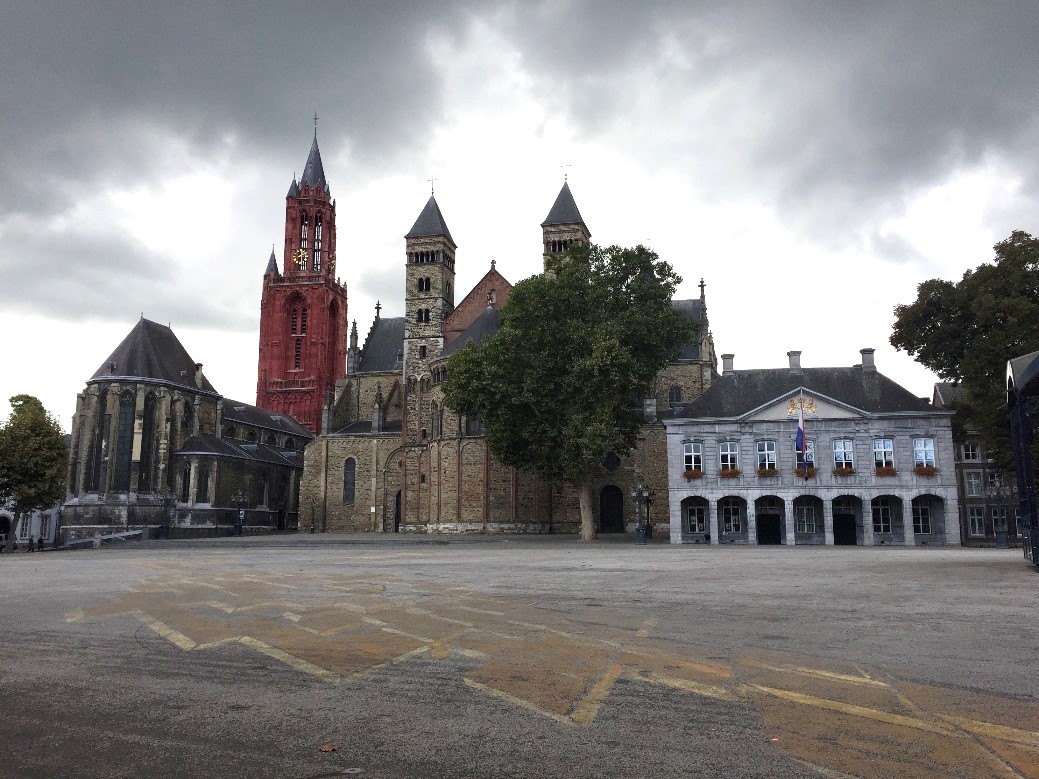
Maastricht is located in the Southern part of Netherlands, in the Limburg province, and is one of the oldest Dutch cities. It is a small university town, with a population of about 120,000, and international students made up one-sixth of that population. From my house, the city centre and the university business faculty are walkable, approximately half an hour by foot. There were the public buses, however they did not run as frequently as they do in Singapore, and there were no direct buses that go to the business faculty from my house. The Dutch bus schedule is amazingly punctual, right down to the very minute that it would arrive at the bus stop, which meant that I could leave the house with confidence of knowing that the bus would arrive at a certain timing. However, a single bus journey to my school takes at least twenty minutes, including walking. Hence, many international students choose to invest in a second-hand bicycle to save time and get around faster. By bike, the university is a mere seven-minute ride away, and I take about the same amount of time to get to the city centre.
Settling in in Maastricht meant that I had to open a bank account, search for a second-hand bicycle that would suit my height and frame (the Dutch are among the tallest people to walk planet Earth, and I am only 1.6 metres), obtain a Dutch mobile number, and become oriented with the city surroundings and the interconnectedness of the roads. For the first four weeks, I relied on Google Maps to navigate the city by bike. I had to make multiple trips to the bank, to the university business faculty to attend my tutorials and lectures, to the supermarket for grocery shopping, and among other errands I had to run. Navigating with Google Maps on bike meant I had to use one hand to hold up my smartphone, and the other hand to steer my bike, while cycling on the roads alongside other regular vehicles (cars, buses, trucks)! It was a challenging feat, one that I could thankfully overcome and which I attributed to years of experience cycling at East Coast Park and in my Yishun neighbourhood. Fortunately for me as well, the Netherlands has a well-known cycling culture, which meant that the roads were extremely bike-friendly, and certain stretches of roads had demarcations for cyclists. These cycling paths are usually in red. If there were no cycling paths, cyclists usually stayed on the right side of the road. However, Maastricht is very hilly, with a mixture of regular tar roads as well as cobblestone pavements, which meant that my bicycle trips were occasionally smooth and other times bumpy.

Grocery shopping and opening my bank account were challenges in itself, due to the language barrier. Dutch is obviously one of the national languages in the Netherlands. Although learning English is part of their elementary curriculum, and many Dutch can in fact converse in English (including the elderly and the younger generation), the Dutch language is still a more preferred communication language. This is evident from the descriptors in the supermarkets and the bank letters that I would receive shortly after opening my bank account. In the first few weeks, I relied on Google Translate to translate everything in the supermarket. Eventually, I got accustomed to and could recognise certain groceries without translating the Dutch words (for example, “uien” meant onion, “knoflook” meant garlic, and if you wanted to buy regular full-fat milk to eat with your cornflakes, you should not grab “karnemelk” from the shelves as that is in fact, buttermilk). However, the bank’s letters were a great nuisance to read, and I definitely struggled with them. I ended up typing out the full letter in Dutch (there were five separate letters from the bank!) and having it Google translated to English to finally understand the bank’s instructions.
Interesting Courses
Maastricht University (UM) has a strict requirement on the number of modules that both regular and exchange students could take. One semester is divided into two periods: Period 1 (September to October) and Period 2 (November to December). The university required students to register for two modules in each period, meaning that the normative course load is four modules per semester. However, I requested to be granted the exception to load five courses with my host university, and succeeded in mapping five modules back to SMU. Out of these modules, two were cleared under the Social Sciences-Major Related (SSMR) category, two were Marketing electives, and the last was mapped back as a Technology and Entrepreneurship (T&E) module.
By far, the most interesting modules would be the two SSMR-equivalent ones, notably Business and Politics in Europe, and Culture, Society, and Politics in Contemporary Asia.
My best friend from SMU, who is a Political Science major, told me that there is a similar SOSS module known as European Union Politics. Prior to embarking on exchange, I had embarrassingly little knowledge of the functioning of the European Union (EU) in general, and only briefly knew the institutions by name. In my self-defence, I am a Psychology major and proud of it, but there is indubitably a large gap in my general knowledge. Having the privilege of taking this course under a very well-travelled and dedicated tutor, Sonja Zaar, and learning alongside European and international students alike, made for a very eye-opening experience. The European students, who came from a mix of core (Germany, Netherlands to name a few) and peripheral nations (Spain), contributed their invaluable insight and knowledge during class discussions.
Our tutor was very involved and often encouraged the exchange students to share their views, or to comment on the similarities (differences) with the political systems back home. Due to my interest in the subject, I was intrinsically motivated to do well in this module despite only requiring a passing grade. For our group presentations, we were given the autonomy to select the topic we were most interested in, and I chose the Eurozone crisis as I saw the perfect opportunity to explore in-depth a topic I had only briefly read about in the media. The setting was also perfect, as I could present our group’s findings to an appropriate international audience.
As for the other SSMR module on Culture, Society, and Politics in Contemporary Asia, I was inspired to take the module out of pure intrigue and curiosity of how Europeans viewed Asia and its inhabitants in general. The tutor asked for each student’s motivation for taking the module, and I had no qualms about sharing. It turned out that I was not the only one in the room. Coincidentally, another Singaporean exchange student was also in the same tutorial group as me, except that she was a junior from NTU. The room had a couple of exchange students as well, three from Asia (India, Korea and Australia), and from other European countries (Italy, South America). The most memorable experience was our group project, which was to apply the PESTLE analysis tool to an Asian country of our choice. My group initially selected Vietnam, but had to make the switch to Hong Kong. The experience was interesting nonetheless, as it enabled me to conduct my own research from an academic perspective on a country that was geographically closer to home. We had to present our findings, and many of our European classmates overwhelmed us with positive feedback and told us they liked our work very much, which was both encouraging and reassuring.
Places I Visited
One of my motivations for choosing to do my exchange in Europe is because of the ease of traveling within Europe itself. With a Dutch visa and residence permit, it allowed me to travel freely within the Schengen area. Three of my favourite places that I had visited are Vienna, Lisbon and Iceland, and I look back with precious memories and experiences of those cities.
I visited Vienna in the fall, and the palaces and their gardens were beautiful. I also watched the Vienna Royal Orchestra perform in a theatre with the most intricate and exquisite interior.

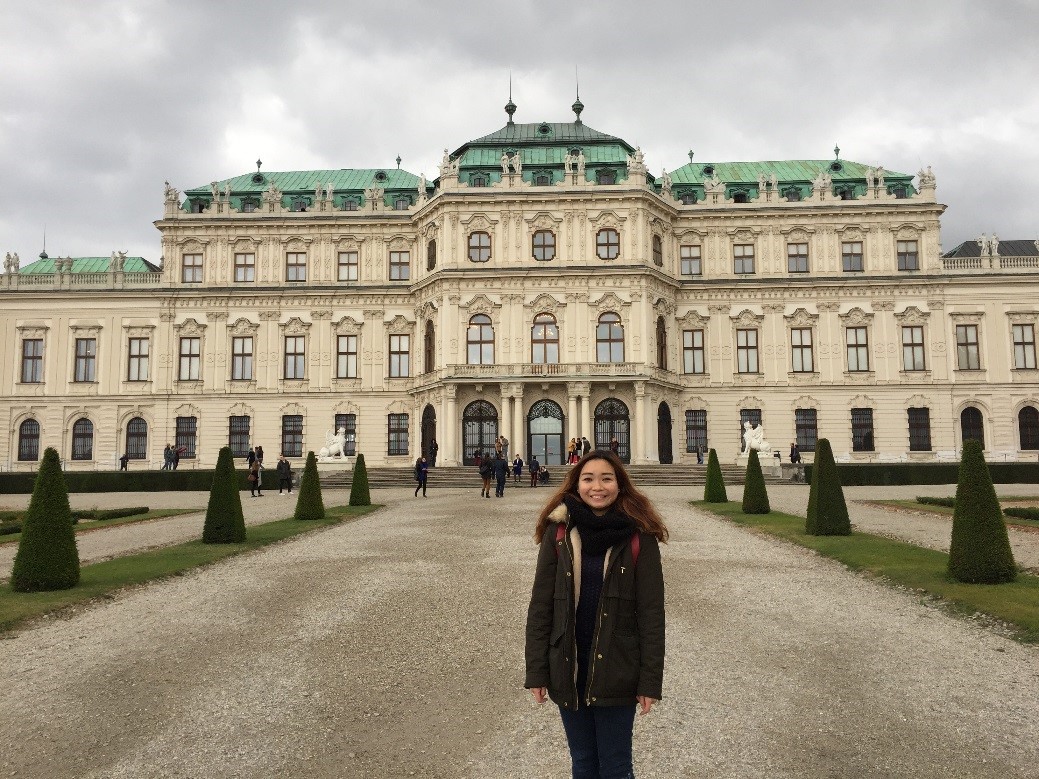
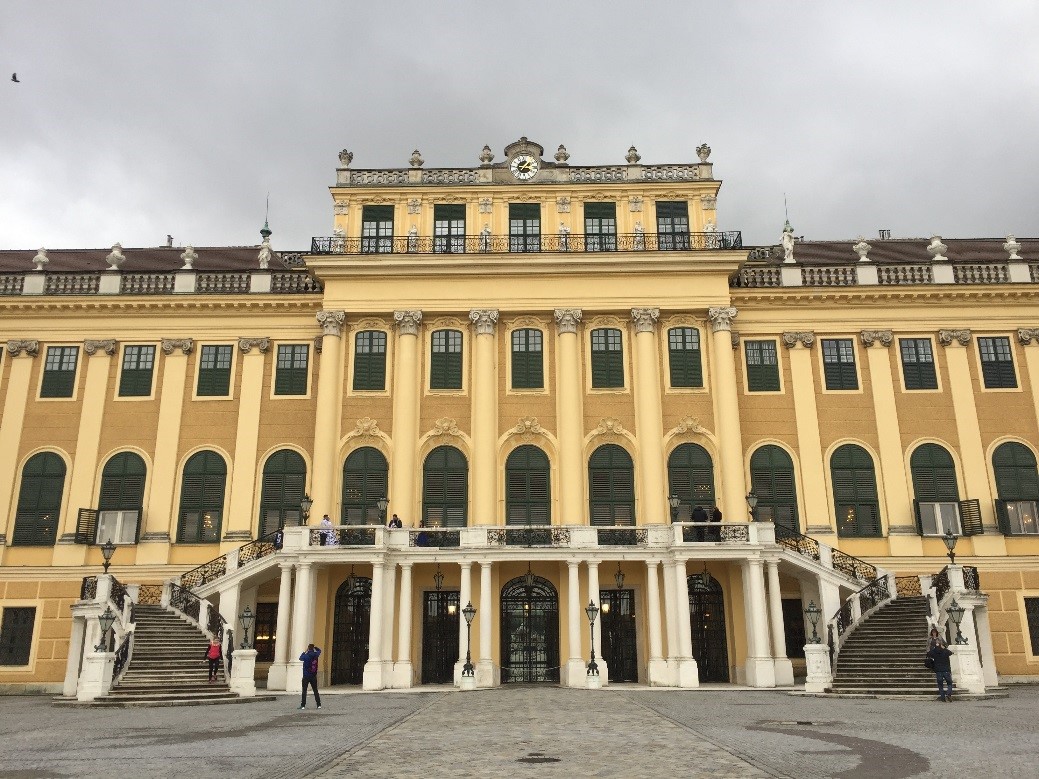
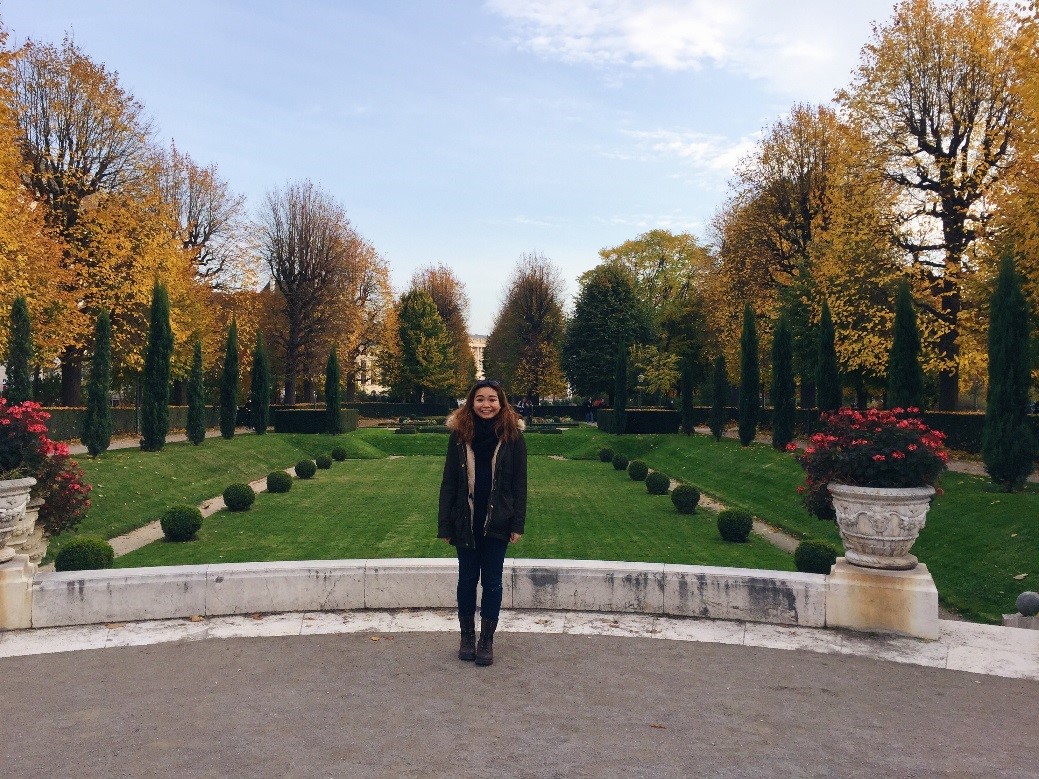
Lisbon was for the seafood and Portuguese egg tarts, as well as the view of the entire city from the highest vantage point.
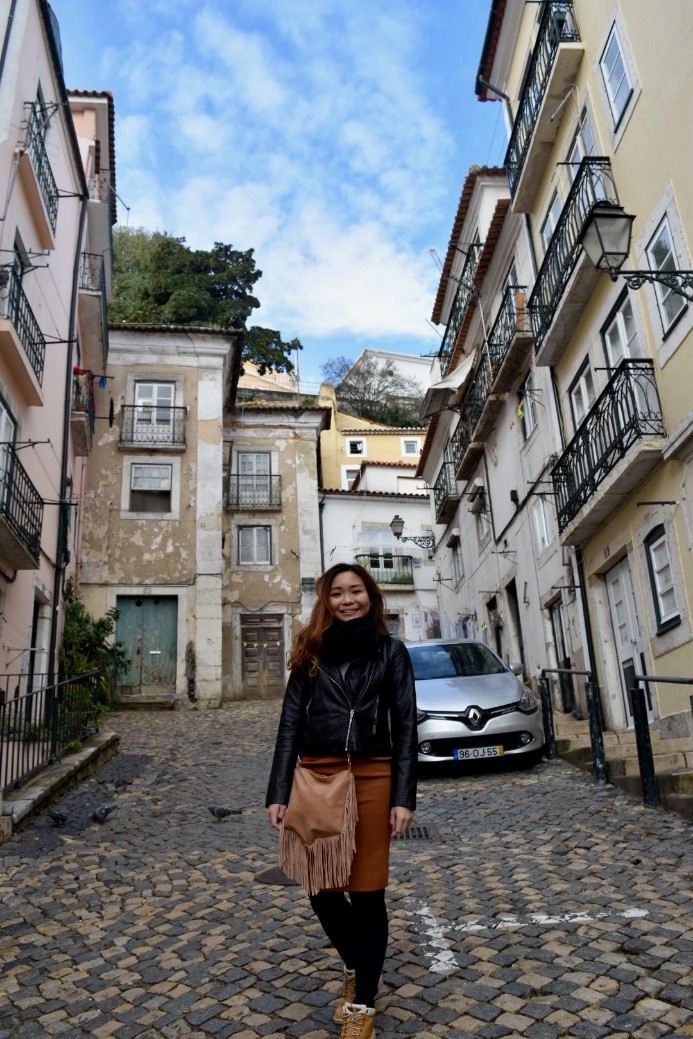
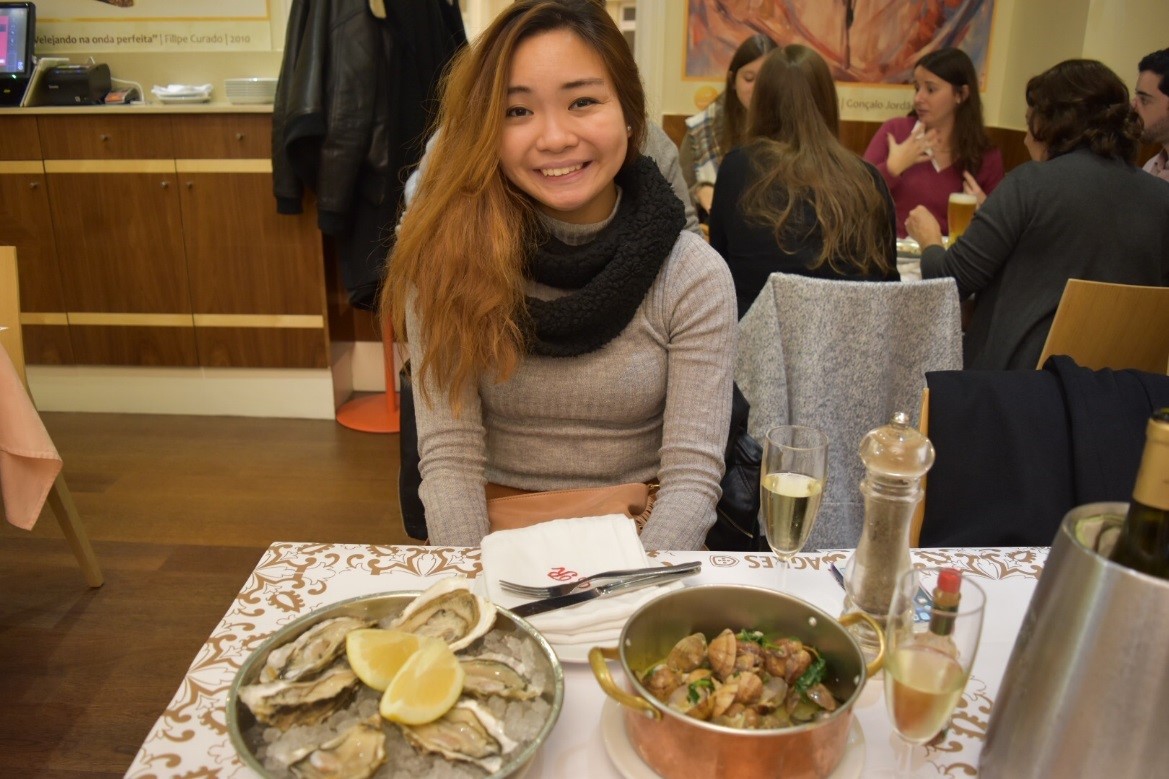
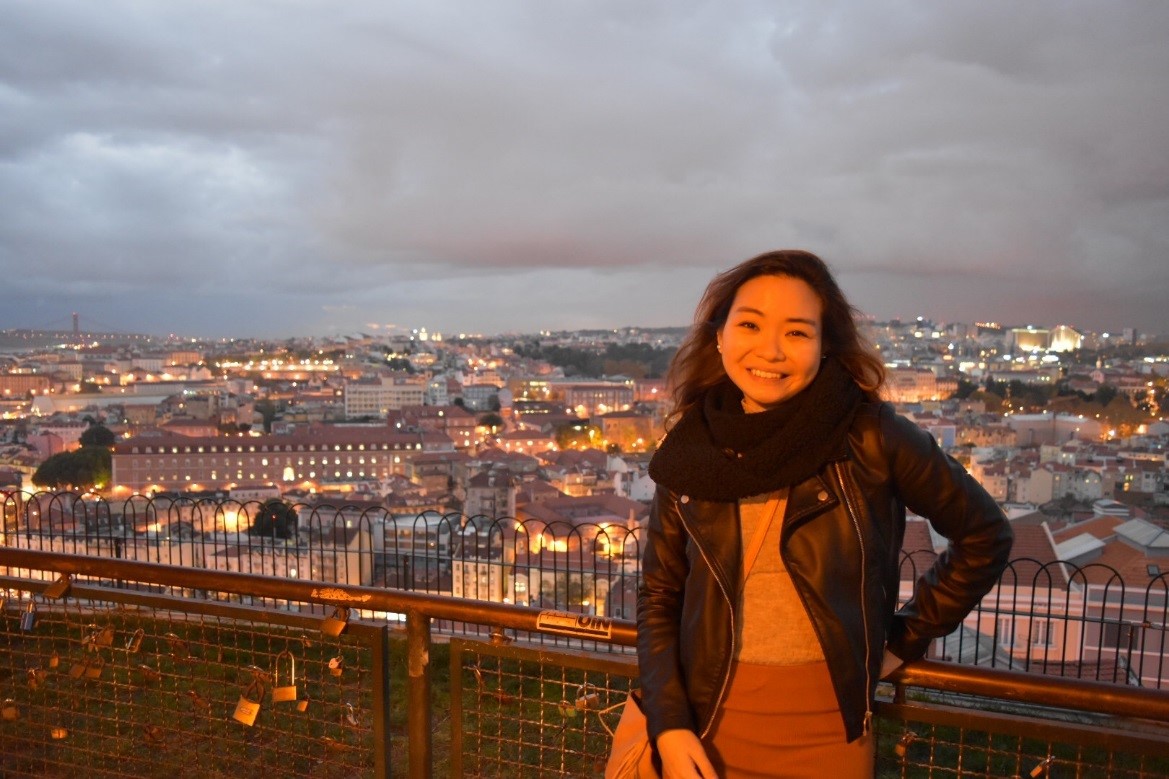
Iceland was an experience that was out of this world. I visited a couple of waterfalls (and could even walk behind one!), geysers, glacier lagoons, black sand beaches, as well as tried their Icelandic burger and hotdogs. Everywhere you turn to look in Iceland is a sight to behold, as there are glacial mountains in the distant, and when the weather is good, the landscape in front of your eyes would do nothing else but simply take your breath away.
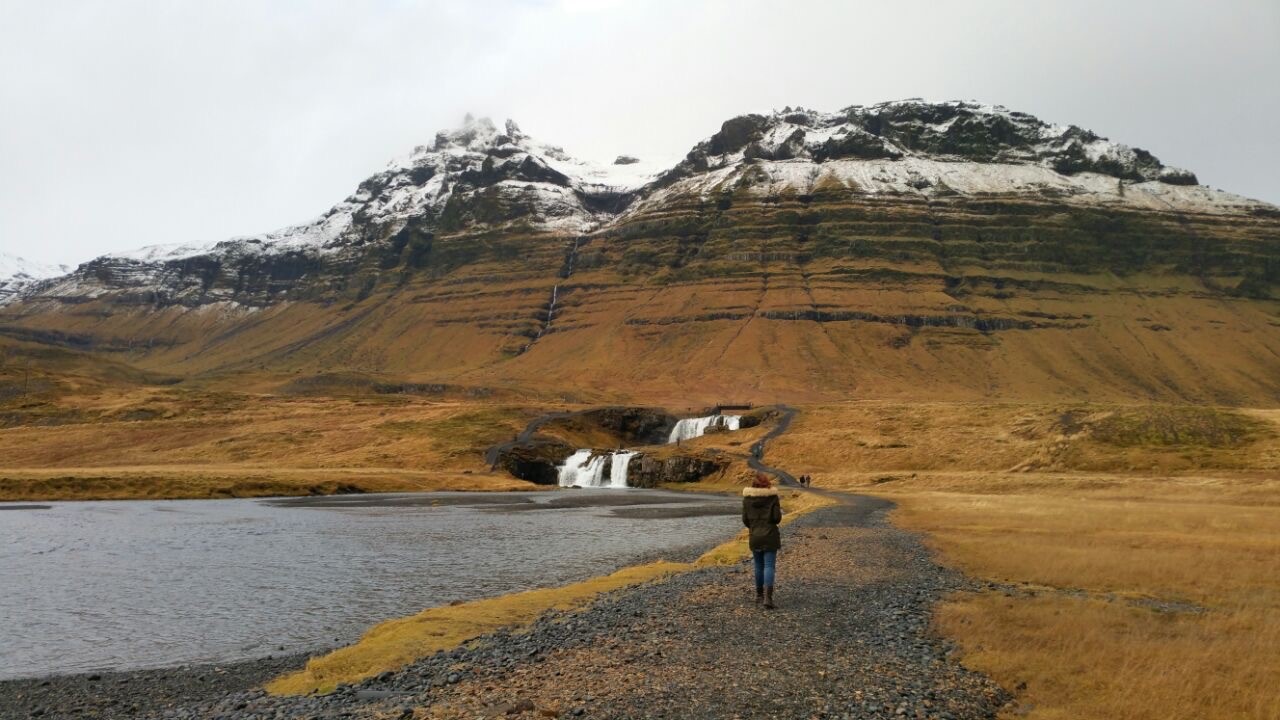
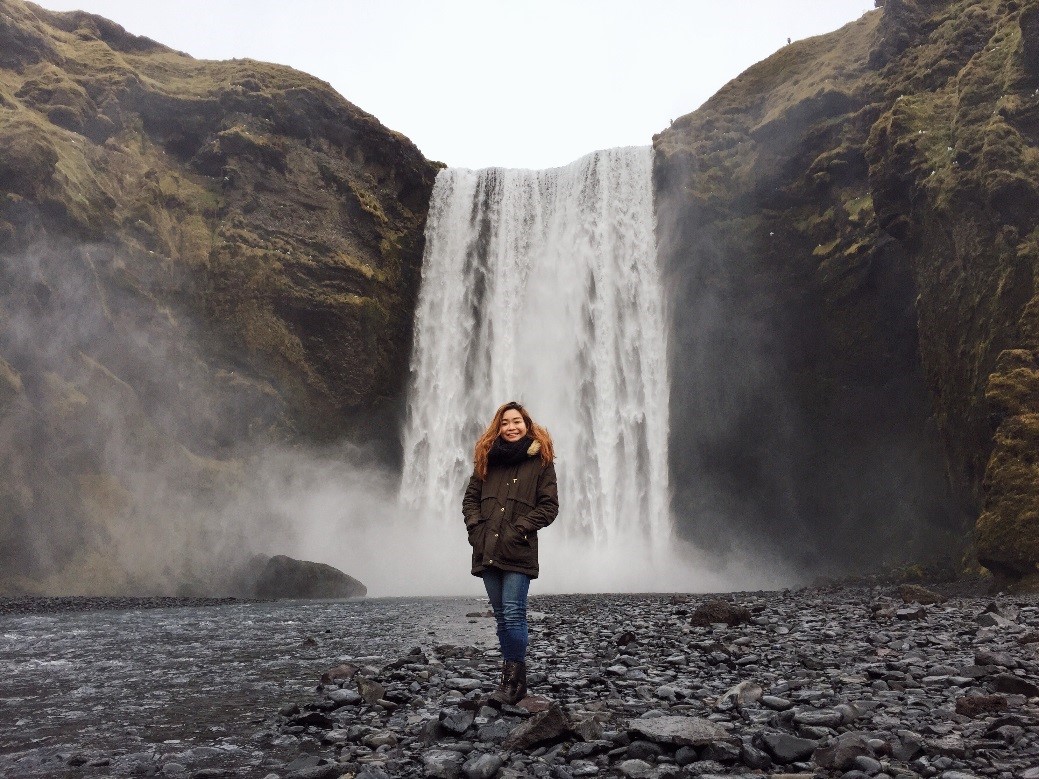
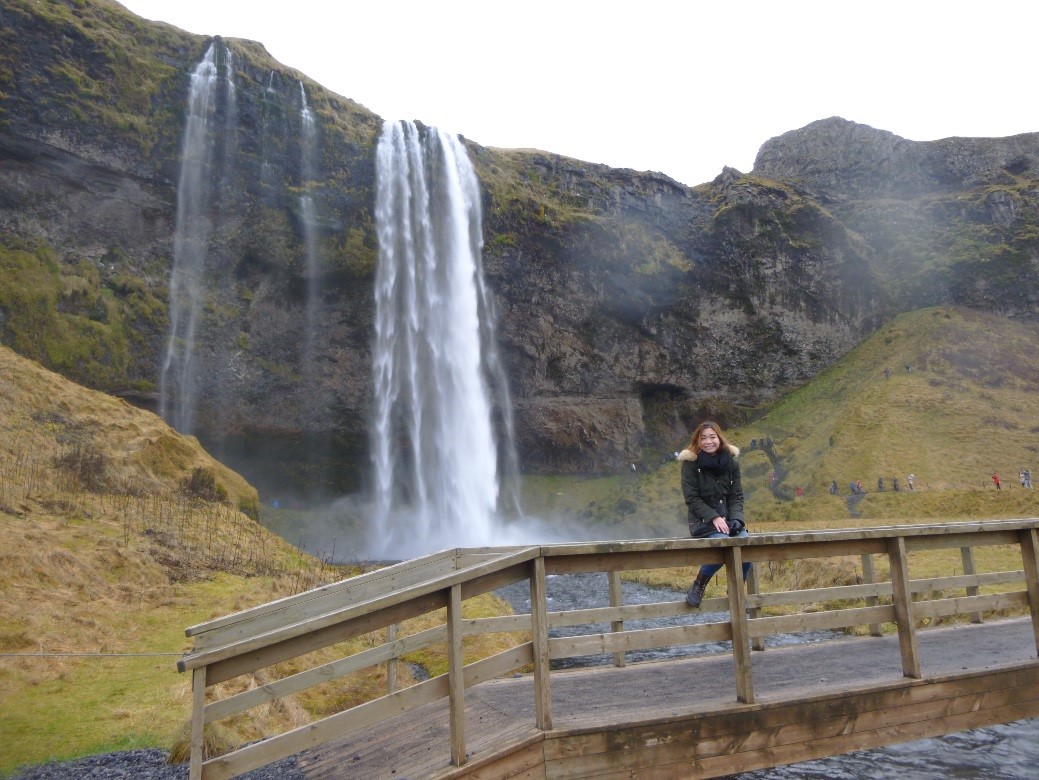
Memories and Lessons
I have learnt that there is nowhere else on Earth that beats the safety and security of Singapore. Living in Singapore almost my entire life, it is very easy to take the security and peace for granted. We simply do not realise how blessed and fortunate we are to walk on the streets at night without having to worry about being mugged. I would say that the safety in Netherlands approaches our standards in Singapore, as I do feel safe walking around Maastricht day or night, but I have had the misfortune of dealing with some racism hurled in my face that I simply did not ask for. Sadly, this prejudice is even more common in other parts of Europe.
In retrospect, there were two incidents that happened during my exchange that made me realise and appreciate the safety back home. I have had the misfortune of being pickpocketed while in Paris, France, and I lost my entire wallet containing important cards such as my residence permit, bank cards, and over a hundred euros. The pickpockets even bought metro tickets with my credit card, which I had to dispute these unauthorised transactions with my bank.
One fine day in winter, I left the house preparing to hit the library with my books, and my bicycle had literally disappeared from the bike rack right outside my house. In Maastricht, bike theft is unfortunately very common. Even though I had invested in a heavy chain lock and bought the ugliest rear saddle shopper bags to “deter thefts”, apparently no lock is impenetrable and thieves could simply dispose of the bag if they really did want the bicycle.
These isolated incidents caused me a great deal of inconvenience and distress. On hindsight, these things were out of my control and I have come to terms with that, but I would neither want to relive the horrors of the sinking realisations, nor do I wish them upon anyone else. At this point, I can only say that I am extremely lucky to have a home to return to in Singapore at the end of my exchange stint, where the crime rate is low and it is very much safer than Europe. As for the thefts, I see them as unfortunate but invaluable learning experiences nonetheless. In very euphemistic terms, I would say that these experiences have definitely tested my abilities and reliance on resources to problem-solve under immense pressure.
Advice for SOSS Juniors
Be prepared for an intensive and challenging workload! Yet, the learning experiences are very rewarding. The system here is different from SMU’s famous seminar-style pedagogy, as they have a lecture-tutorial system, as well as a huge focus on problem-based learning. The emphasis on class participation and speaking up is heavily weighed as well. If you are the outspoken and inquisitive type, you would have no problem surviving the curriculum at Maastricht University. If you load two modules per period, you would definitely have pockets of free time during the week to travel.
I would say that Maastricht is superior to Amsterdam location-wise, because it lies right smack in the middle of Belgium and Germany (I live less than 3km away from the Belgium border!). You have a few airports to fly out from, including Schiphol, two in Brussels, as well as the German cities (Dusseldorf, Cologne) which are extremely accessible by train. Should you prefer cheaper transport modes to flight, you can choose buses or trains to travel. Paris is a mere six hours’ bus ride from Maastricht; the closest Belgium city, Liège, is forty minutes away by bus; and the closest German city, Aachen, is only an hour’s bus ride away. If you like to cycle, you will enjoy the cycling culture here in Maastricht. It is safe to ride on the roads and the drivers usually give way to you.
Having no prior knowledge of the Dutch language is fine, as there is Google Translate for everything, and most Dutch can speak English anyway. The Dutch people are known for being the straightforward type, yet they are big on gender equality and all the Dutch I’ve met and interacted with in my four months here have been very kind towards me and well-intentioned thus far.
The university has an extremely international culture, therefore it is not surprising if your tutorial group has at least half a dozen different nationalities, and you can indeed meet people from all over the world, which is a refreshing experience from SMU. How often we do local students go out of the way to interact with exchange students, anyway?
Maastricht is truly a small but cosy city, one that you would love to return to and call your (second) home after many week-long trips traveling around Europe!
